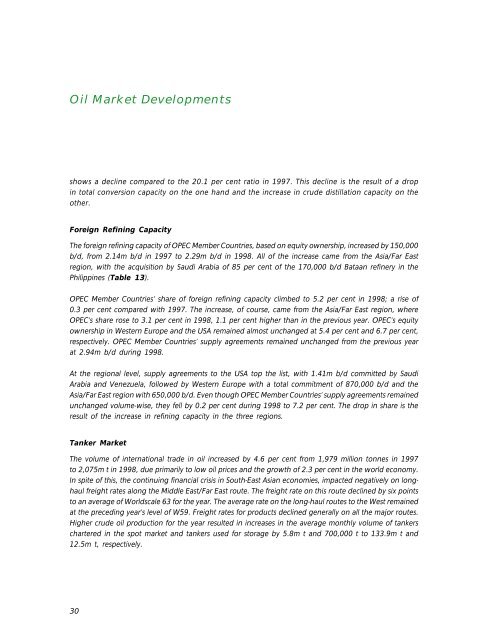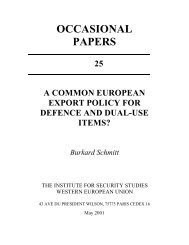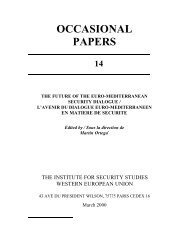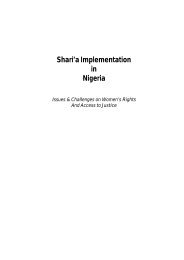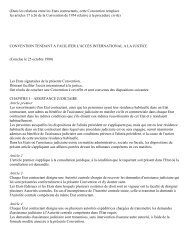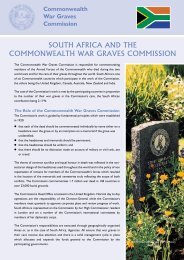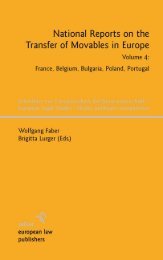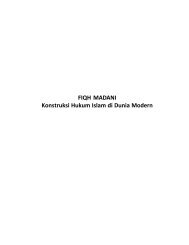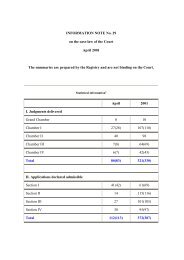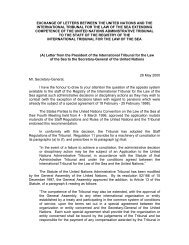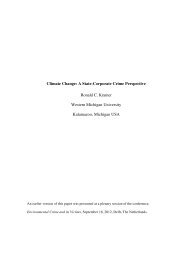C:\Annual Report 1998\AR1998 fo - Peace Palace Library
C:\Annual Report 1998\AR1998 fo - Peace Palace Library
C:\Annual Report 1998\AR1998 fo - Peace Palace Library
Create successful ePaper yourself
Turn your PDF publications into a flip-book with our unique Google optimized e-Paper software.
Oil Market Developments<br />
shows a decline compared to the 20.1 per cent ratio in 1997. This decline is the result of a drop<br />
in total conversion capacity on the one hand and the increase in crude distillation capacity on the<br />
other.<br />
Foreign Refining Capacity<br />
The <strong>fo</strong>reign refining capacity of OPEC Member Countries, based on equity ownership, increased by 150,000<br />
b/d, from 2.14m b/d in 1997 to 2.29m b/d in 1998. All of the increase came from the Asia/Far East<br />
region, with the acquisition by Saudi Arabia of 85 per cent of the 170,000 b/d Bataan refinery in the<br />
Philippines (Table 13).<br />
OPEC Member Countries’ share of <strong>fo</strong>reign refining capacity climbed to 5.2 per cent in 1998; a rise of<br />
0.3 per cent compared with 1997. The increase, of course, came from the Asia/Far East region, where<br />
OPEC’s share rose to 3.1 per cent in 1998, 1.1 per cent higher than in the previous year. OPEC’s equity<br />
ownership in Western Europe and the USA remained almost unchanged at 5.4 per cent and 6.7 per cent,<br />
respectively. OPEC Member Countries’ supply agreements remained unchanged from the previous year<br />
at 2.94m b/d during 1998.<br />
At the regional level, supply agreements to the USA top the list, with 1.41m b/d committed by Saudi<br />
Arabia and Venezuela, <strong>fo</strong>llowed by Western Europe with a total commitment of 870,000 b/d and the<br />
Asia/Far East region with 650,000 b/d. Even though OPEC Member Countries’ supply agreements remained<br />
unchanged volume-wise, they fell by 0.2 per cent during 1998 to 7.2 per cent. The drop in share is the<br />
result of the increase in refining capacity in the three regions.<br />
Tanker Market<br />
The volume of international trade in oil increased by 4.6 per cent from 1,979 million tonnes in 1997<br />
to 2,075m t in 1998, due primarily to low oil prices and the growth of 2.3 per cent in the world economy.<br />
In spite of this, the continuing financial crisis in South-East Asian economies, impacted negatively on longhaul<br />
freight rates along the Middle East/Far East route. The freight rate on this route declined by six points<br />
to an average of Worldscale 63 <strong>fo</strong>r the year. The average rate on the long-haul routes to the West remained<br />
at the preceding year’s level of W59. Freight rates <strong>fo</strong>r products declined generally on all the major routes.<br />
Higher crude oil production <strong>fo</strong>r the year resulted in increases in the average monthly volume of tankers<br />
chartered in the spot market and tankers used <strong>fo</strong>r storage by 5.8m t and 700,000 t to 133.9m t and<br />
12.5m t, respectively.<br />
30


